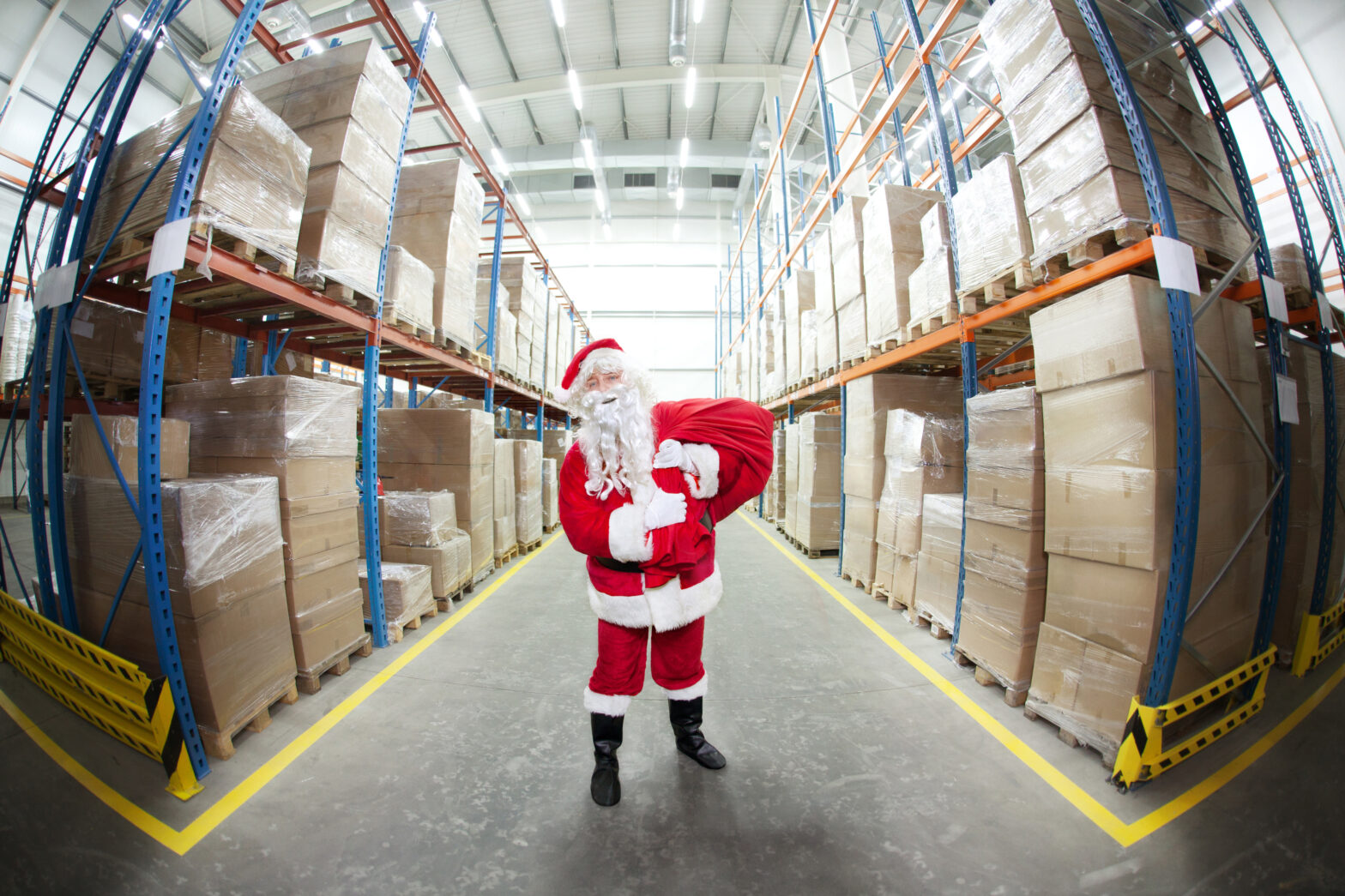Santa Claus’ supply chain is objectively impressive. According to the lore surrounding this mysterious businessman, he delivers one present to every child in the world — that’s 1.93 billion children — in one evening. It sounds like an impossible task for an impossible man. However, the real takeaway for small businesses — and the real Christmas miracle — is that Santa’s supply chain is actually a possibility.
1. It’s all just a matter of mathematics
Firstly, that figure of 1.93 billion needs readdressing. It’s well established that children who don’t believe in Santa and those on the naughty list don’t make the cut. A reasonable guess, therefore, would be that Santa delivers to, say, 1.5 billion children on Christmas Eve. This means his elves need to make 1.5 billion presents every year.
This is perfectly doable. Assuming that the average elf works just a little bit harder than the average German at 1,500 hours a year, and if we assume that an elf can make one present every two hours on average, then Santa would need two million employees to make his supply chain a reality.
Two million employees, as it turns out, is a perfectly realistic number as well. Walmart, the biggest private employer in the world, has more than two million workers. Surely, anything Walmart can do, Santa can do better, right?
2. Secrets can be valuable
Santa’s business model should be the envy of any aspiring entrepreneur. His brand is instantly recognisable, his organisation is global in a wildly ambitious way, and he has absolutely no competition. Yet, part of the reason why so much of the mathematics surrounding Santa’s supply chain is guesswork and analogy is that Santa keeps his cards close to his chest. This, in turn, would explain why Santa remains the father of Christmas… Father Christmas, if you will.
Trade secrets can market your business as unique against a backdrop of samey competition by creating a secretive aura around what you do. Coca-Cola, for example, has marketed their fizzy drink on a ‘secret recipe’ for years. Santa’s supply chain does the same thing. With his enigmatic approach to his organisation, Santa remains a lovable and reputable brand after hundreds of years.
3. Let other people market for you
Marketing isn’t so much a science as it is an art. There are few cases of one-size-fits-all and, even when you think you’ve found one, there’s always one business that does things differently. One definite rule that all businesses should follow is to have an active Facebook and Twitter account. After all, you can’t expect to go very far without interacting with your followers on Twitter and Facebook.
Except that Apple, the largest tech company in the world and the eighth largest company in the world overall, has both a Facebook and Twitter account on which it has posted absolutely nothing. Ever.
Do you know who else hasn’t ever posted anything on Facebook or Twitter? Santa Claus. Yet despite this, or maybe even because of it, Santa’s supply chain and his brand remain synonymous with Christmas and good feelings. The moral for small businesses isn’t that they need to avoid social media (remember, one size doesn’t fit all when it comes to marketing). Rather, small businesses need to recognise that letting their customers market their business for them can be a more powerful tactic than doing it yourself.
Santa’s brand and the story of his supply chain tap into the emotions of his customers. As a result, people wind up posting on Twitter and Facebook about Santa every time December rolls around. All of this is free advertising for the man in red.
Still, the odd verified Tweet here and there wouldn’t exactly hurt his brand either. It would certainly help to silence all those ‘Santa Claus isn’t real!’ types…
4. Be consistent and safe
Of course, no one’s going to be marketing your brand every year, for free, on the basis that you’re a kind, lovable and amazing person, if you’re not a kind, lovable and amazing person. Still, small businesses need not aim for Santa levels of merriness. Instead, small businesses should remember that customers value brands they can trust — and who’s more trustworthy than Ol’ Saint Nick?
Santa’s appeal is vested in the fact that people know exactly what to expect from his business. He’s a philanthropic present giver who visits once a year, dressed in red and with his nine magical reindeer in tow. Santa’s brand is consistent, it’s reliable and it lives up to its name. This is a lesson that businesses should learn.
A practical and actionable way that businesses can achieve consistency is through safety. Nothing is more consistent than a safe supply chain and you can bet that Santa likely employs a few thousand extra elves to deliver regular equipment inspections and sleigh inspections.
Then there’s Santa’s warehouse. Storing 1.5 billion toys is no mean feat. Each toy is going to be individual and each toy needs to be stored so that his elves know exactly which gift is going to which child. A warehouse like that would require a herculean amount of bureaucracy to keep things orderly. A huge part of that is safety.
In the UK, Canada and Australia, the government recommendations on warehouse racking inspection frequency differ somewhat. However, a good general rule to take from these three countries is that warehouse racking inspections should happen at least once a year from an outside expert. All countries also recommend more regular rack safety inspections from staff.
Getting elves to inspect racking on a regular basis isn’t going to be an issue (these guys are meticulous and magical), but getting an outside expert in might be problematic. Santa wants to keep his supply chain a secret, so bringing in just anybody is a definite no. Still, I hear that the Easter Bunny is free most of the year. Whether or not he’s qualified to inspect racking is another issue altogether, though.
For small businesses, safety should also be a big part of what keeps your business model consistent and reliable. If racking collapses in Santa’s warehouse, there go 1,000 presents (about 15 month’s work for one elf). Besides that, there’s the danger of elves being caught in the collapse as well. Your business might not be as Christmassy, but the financial and human costs of an unsafe workplace are the same. It’s why OSHA calculates that businesses can save four to six dollars for every one dollar they invest in safety.
5. Don’t be a Scrooge
The most important lesson for small businesses to learn from Santa is to be generous at Christmas time. Not only do customers expect it — in terms of deals and offers — but it’s a great way to sell more stuff at the busiest time of the year.
More than that, not being a Scrooge just means being nice. Treat your employees well at Christmas and they’ll likely stay on until next Christmas. It’s not just Santa who recognises the value of being nice to his staff. Richard Branson has often spoken at length about the value of being kind to your employees.
Wait a second. Richard Branson is an older man with white hair and a white beard, he runs a huge global operation, his business’ favourite colour is red, and he owns a fleet of planes capable of delivering things all over the world… Coincidence?
Justin O’Sullivan is the owner of Storage Equipment Experts.





